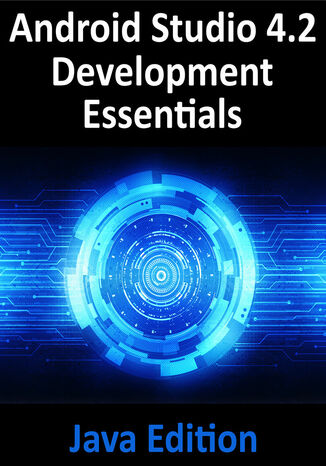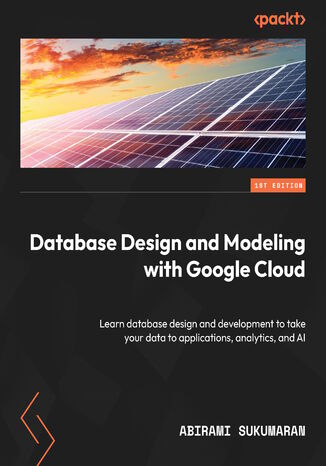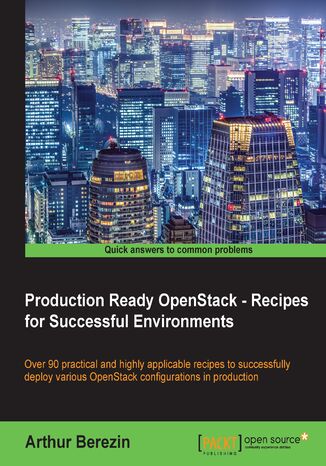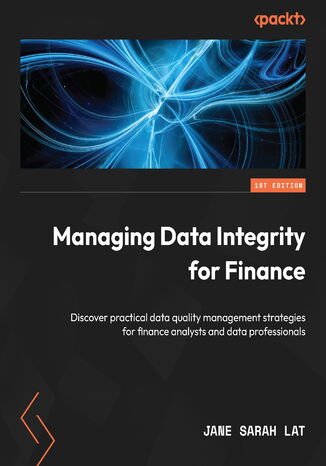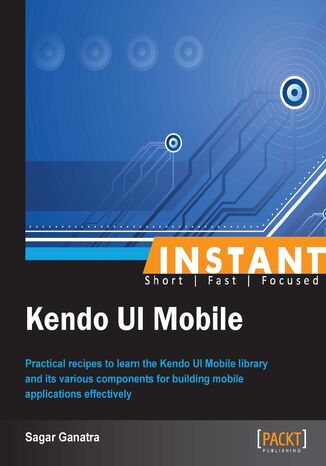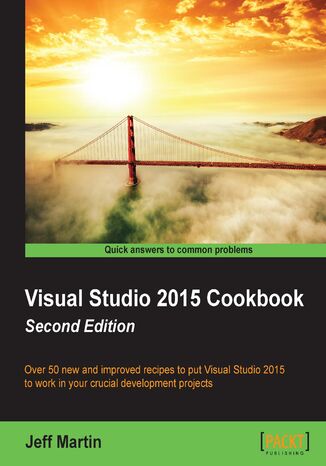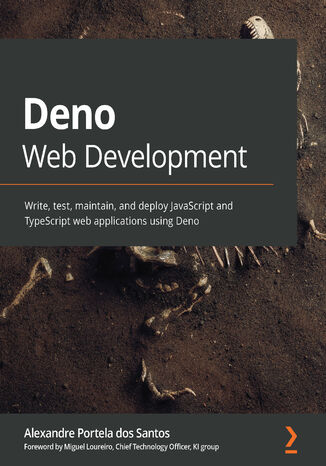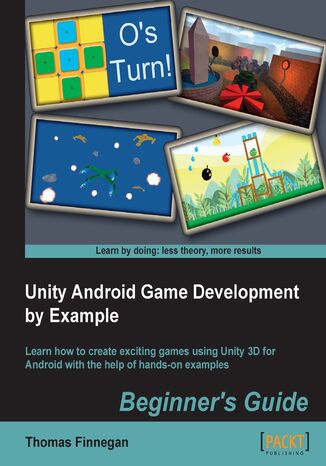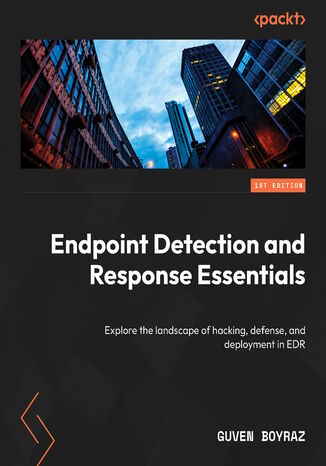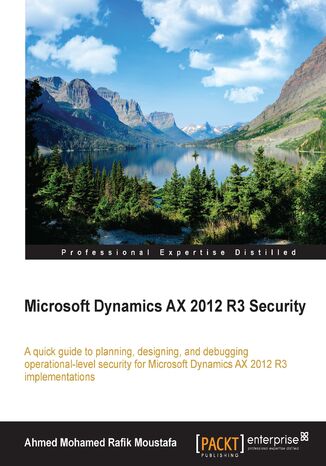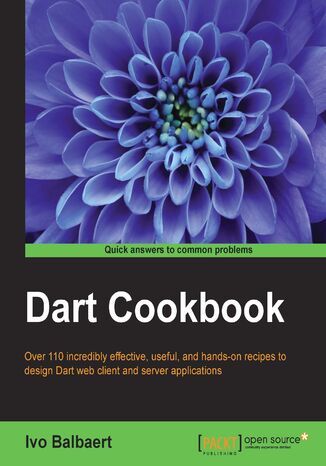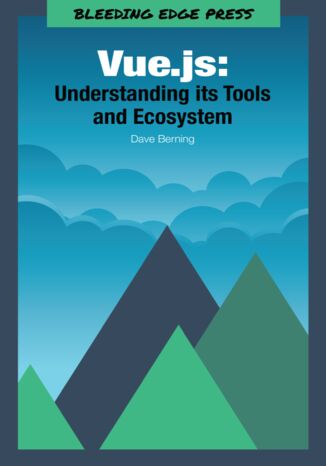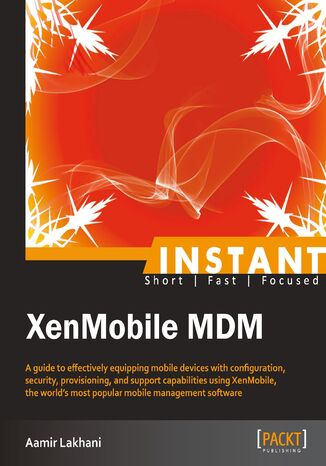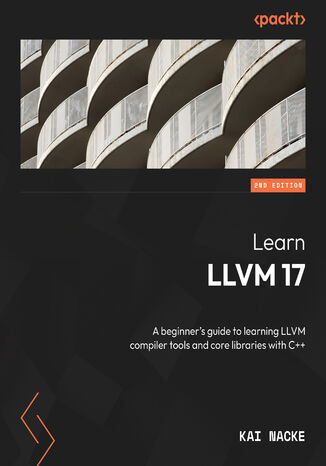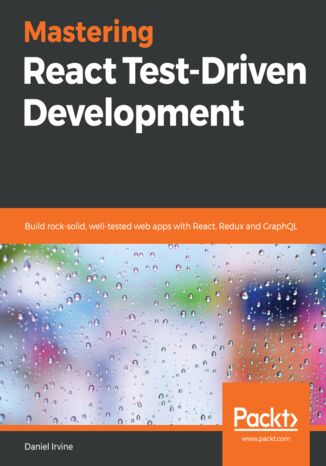Categories
Ebooks
-
Business and economy
- Bitcoin
- Businesswoman
- Coaching
- Controlling
- E-business
- Economy
- Finances
- Stocks and investments
- Personal competence
- Computer in the office
- Communication and negotiation
- Small company
- Marketing
- Motivation
- Multimedia trainings
- Real estate
- Persuasion and NLP
- Taxes
- Social policy
- Guides
- Presentations
- Leadership
- Public Relation
- Reports, analyses
- Secret
- Social Media
- Sales
- Start-up
- Your career
- Management
- Project management
- Human Resources
-
For children
-
For youth
-
Education
-
Encyclopedias, dictionaries
-
E-press
- Architektura i wnętrza
- Health and Safety
- Biznes i Ekonomia
- Home and garden
- E-business
- Ekonomia i finanse
- Esoterecism
- Finances
- Personal finance
- Business
- Photography
- Computer science
- HR & Payroll
- For women
- Computers, Excel
- Accounts
- Culture and literature
- Scientific and academic
- Environmental protection
- Opinion-forming
- Education
- Taxes
- Travelling
- Psychology
- Religion
- Agriculture
- Book and press market
- Transport and Spedition
- Healthand beauty
-
History
-
Computer science
- Office applications
- Data bases
- Bioinformatics
- IT business
- CAD/CAM
- Digital Lifestyle
- DTP
- Electronics
- Digital photography
- Computer graphics
- Games
- Hacking
- Hardware
- IT w ekonomii
- Scientific software package
- School textbooks
- Computer basics
- Programming
- Mobile programming
- Internet servers
- Computer networks
- Start-up
- Operational systems
- Artificial intelligence
- Technology for children
- Webmastering
-
Other
-
Foreign languages
-
Culture and art
-
School reading books
-
Literature
- Antology
- Ballade
- Biographies and autobiographies
- For adults
- Dramas
- Diaries, memoirs, letters
- Epic, epopee
- Essay
- Fantasy and science fiction
- Feuilletons
- Work of fiction
- Humour and satire
- Other
- Classical
- Crime fiction
- Non-fiction
- Fiction
- Mity i legendy
- Nobelists
- Novellas
- Moral
- Okultyzm i magia
- Short stories
- Memoirs
- Travelling
- Narrative poetry
- Poetry
- Politics
- Popular science
- Novel
- Historical novel
- Prose
- Adventure
- Journalism, publicism
- Reportage novels
- Romans i literatura obyczajowa
- Sensational
- Thriller, Horror
- Interviews and memoirs
-
Natural sciences
-
Social sciences
-
School textbooks
-
Popular science and academic
- Archeology
- Bibliotekoznawstwo
- Cinema studies
- Philology
- Polish philology
- Philosophy
- Finanse i bankowość
- Geography
- Economy
- Trade. World economy
- History and archeology
- History of art and architecture
- Cultural studies
- Linguistics
- Literary studies
- Logistics
- Maths
- Medicine
- Humanities
- Pedagogy
- Educational aids
- Popular science
- Other
- Psychology
- Sociology
- Theatre studies
- Theology
- Economic theories and teachings
- Transport i spedycja
- Physical education
- Zarządzanie i marketing
-
Guides
-
Game guides
-
Professional and specialist guides
-
Law
- Health and Safety
- History
- Road Code. Driving license
- Law studies
- Healthcare
- General. Compendium of knowledge
- Academic textbooks
- Other
- Construction and local law
- Civil law
- Financial law
- Economic law
- Economic and trade law
- Criminal law
- Criminal law. Criminal offenses. Criminology
- International law
- International law
- Health care law
- Educational law
- Tax law
- Labor and social security law
- Public, constitutional and administrative law
- Family and Guardianship Code
- agricultural law
- Social law, labour law
- European Union law
- Industry
- Agricultural and environmental
- Dictionaries and encyclopedia
- Public procurement
- Management
-
Tourist guides and travel
- Africa
- Albums
- Southern America
- North and Central America
- Australia, New Zealand, Oceania
- Austria
- Asia
- Balkans
- Middle East
- Bulgary
- China
- Croatia
- The Czech Republic
- Denmark
- Egipt
- Estonia
- Europe
- France
- Mountains
- Greece
- Spain
- Holand
- Iceland
- Lithuania
- Latvia
- Mapy, Plany miast, Atlasy
- Mini travel guides
- Germany
- Norway
- Active travelling
- Poland
- Portugal
- Other
- Przewodniki po hotelach i restauracjach
- Russia
- Romania
- Slovakia
- Slovenia
- Switzerland
- Sweden
- World
- Turkey
- Ukraine
- Hungary
- Great Britain
- Italy
-
Psychology
- Philosophy of life
- Kompetencje psychospołeczne
- Interpersonal communication
- Mindfulness
- General
- Persuasion and NLP
- Academic psychology
- Psychology of soul and mind
- Work psychology
- Relacje i związki
- Parenting and children psychology
- Problem solving
- Intellectual growth
- Secret
- Sexapeal
- Seduction
- Appearance and image
- Philosophy of life
-
Religion
-
Sport, fitness, diets
-
Technology and mechanics
Audiobooks
-
Business and economy
- Bitcoin
- Businesswoman
- Coaching
- Controlling
- E-business
- Economy
- Finances
- Stocks and investments
- Personal competence
- Communication and negotiation
- Small company
- Marketing
- Motivation
- Real estate
- Persuasion and NLP
- Taxes
- Social policy
- Guides
- Presentations
- Leadership
- Public Relation
- Secret
- Social Media
- Sales
- Start-up
- Your career
- Management
- Project management
- Human Resources
-
For children
-
For youth
-
Education
-
Encyclopedias, dictionaries
-
E-press
-
History
-
Computer science
-
Other
-
Foreign languages
-
Culture and art
-
School reading books
-
Literature
- Antology
- Ballade
- Biographies and autobiographies
- For adults
- Dramas
- Diaries, memoirs, letters
- Epic, epopee
- Essay
- Fantasy and science fiction
- Feuilletons
- Work of fiction
- Humour and satire
- Other
- Classical
- Crime fiction
- Non-fiction
- Fiction
- Mity i legendy
- Nobelists
- Novellas
- Moral
- Okultyzm i magia
- Short stories
- Memoirs
- Travelling
- Poetry
- Politics
- Popular science
- Novel
- Historical novel
- Prose
- Adventure
- Journalism, publicism
- Reportage novels
- Romans i literatura obyczajowa
- Sensational
- Thriller, Horror
- Interviews and memoirs
-
Natural sciences
-
Social sciences
-
Popular science and academic
-
Guides
-
Professional and specialist guides
-
Law
-
Tourist guides and travel
-
Psychology
- Philosophy of life
- Interpersonal communication
- Mindfulness
- General
- Persuasion and NLP
- Academic psychology
- Psychology of soul and mind
- Work psychology
- Relacje i związki
- Parenting and children psychology
- Problem solving
- Intellectual growth
- Secret
- Sexapeal
- Seduction
- Appearance and image
- Philosophy of life
-
Religion
-
Sport, fitness, diets
-
Technology and mechanics
Videocourses
-
Data bases
-
Big Data
-
Biznes, ekonomia i marketing
-
Cybersecurity
-
Data Science
-
DevOps
-
For children
-
Electronics
-
Graphics/Video/CAX
-
Games
-
Microsoft Office
-
Development tools
-
Programming
-
Personal growth
-
Computer networks
-
Operational systems
-
Software testing
-
Mobile devices
-
UX/UI
-
Web development
-
Management
Podcasts
Android Studio is an Integrated Development Environment based on the JetBrains IntelliJ IDEA. It provides developers with a unique platform to design and develop Android apps using various developer tools. The new Android Studio 4.2 has an upgraded IntelliJ platform and a variety of new features designed to improve the productivity of Android app developers. Fully updated for Android Studio 4.2, the objective of this book is to help you master the skills necessary to develop Android applications using Java as the programming language.This book begins by outlining the steps necessary to set up an Android development and testing environment and introducing programming in Java, describing data types, flow control, functions, lambdas, and object-oriented programming. It includes an overview of Android Studio, covering areas such as tool windows, the code editor, and the Layout Editor tool. An introduction to Android architecture is followed by an in-depth explanation of the design of Android applications and user interfaces using the Android Studio environment.Early chapters detail Android Architecture components like view models, lifecycle management, Room database access, the Database Inspector, app navigation, live data, and data binding. Advanced topics such as intents are also covered, as are touch screen handling, gesture recognition, and the recording and playback of audio. You will also explore printing, transitions, cloud-based file storage, and foldable device support.Detailed descriptions of the concepts of material design are provided, including the use of floating action buttons, Snackbars, tabbed interfaces, card views, navigation drawers, and collapsing toolbars. Some key features of Android Studio 4.2 and Android discussed in-depth include the Layout Editor, the ConstraintLayout and ConstraintSet classes, MotionLayout Editor, view binding, constraint chains, barriers, and direct reply notifications. Later chapters cover advanced features of Android Studio such as App Links, Dynamic Delivery, the Android Studio Profiler, Gradle build configuration, and submitting apps to the Google Play Developer Console.
Abirami Sukumaran, Priyanka Vergadia, Bagirathi Narayanan
In the age of lightning-speed delivery, customers want everything developed, built, and delivered at high speed and at scale. Knowledge, design, and choice of database is critical in that journey, but there is no one-size-fits-all solution. This book serves as a comprehensive and practical guide for data professionals who want to design and model their databases efficiently. The book begins by taking you through business, technical, and design considerations for databases. Next, it takes you on an immersive structured database deep dive for both transactional and analytical real-world use cases using Cloud SQL, Spanner, and BigQuery. As you progress, you’ll explore semi-structured and unstructured database considerations with practical applications using Firestore, cloud storage, and more. You’ll also find insights into operational considerations for databases and the database design journey for taking your data to AI with Vertex AI APIs and generative AI examples. By the end of this book, you will be well-versed in designing and modeling data and databases for your applications using Google Cloud.
OpenStack is the most popular open source cloud platform used by organizations building internal private clouds and by public cloud providers. OpenStack is designed in a fully distributed architecture to provide Infrastructure as a Service, allowing us to maintain a massively scalable cloud infrastructure. OpenStack is developed by a vibrant community of open source developers who come from the largest software companies in the world.The book provides a comprehensive and practical guide to the multiple uses cases and configurations that OpenStack supports. This book simplifies the learning process by guiding you through how to install OpenStack in a single controller configuration.The book goes deeper into deploying OpenStack in a highly available configuration. You'll then configure Keystone Identity Services using LDAP, Active Directory, or the MySQL identity provider and configure a caching layer and SSL. After that, you will configure storage back-end providers for Glance and Cinder, which will include Ceph, NFS, Swift, and local storage. Then you will configure the Neutron networking service with provider network VLANs, and tenant network VXLAN and GRE.Also, you will configure Nova's Hypervisor with KVM, and QEMU emulation, and you will configure Nova's scheduler filters and weights. Finally, you will configure Horizon to use Apache HTTPD and SSL, and you will customize the dashboard's appearance.
Data integrity management plays a critical role in the success and effectiveness of organizations trying to use financial and operational data to make business decisions. Unfortunately, there is a big gap between the analysis and management of finance data along with the proper implementation of complex data systems across various organizations.The first part of this book covers the important concepts for data quality and data integrity relevant to finance, data, and tech professionals. The second part then focuses on having you use several data tools and platforms to manage and resolve data integrity issues on financial data. The last part of this the book covers intermediate and advanced solutions, including managed cloud-based ledger databases, database locks, and artificial intelligence, to manage the integrity of financial data in systems and databases.After finishing this hands-on book, you will be able to solve various data integrity issues experienced by organizations globally.
The Kendo UI Mobile library is a one stop solution to build mobile applications rapidly. It comes with several built-in widgets that enable application developers to build intuitive applications for small screen devices. It also provides more control to these developers by providing various components that can be extended or configured to match their needs.Instant Kendo UI Mobile How-to takes a deep look at various components of the Kendo UI Mobile library and provides solutions to common use cases involved in building a mobile application. It enables application developers to use HTML, CSS, and JavaScript to build mobile applications that provide a native look and feel on various platforms such as iOS, Android, and BlackBerry without having to maintain a separate code base.This guide introduces the user to the Kendo UI Mobile library and provides a step-by-step approach to creating your first mobile application. It then introduces you to several components and provides solutions to some of the common use cases you may encounter in your development.The Kendo UI Mobile library is composed of two parts – the aplication framework and a set of widgets. The aplication framework focuses on configuring the application, handling various touch-based events, rendering on different devices to provide a native look and feel, and transitioning from one view to the other. The widget library contains several widgets that enable you to build applications more rapidly than ever before.
Visual Studio 2015 is the premier tool for developers targeting the Microsoft platform. Learning how to effectively use this technology can enhance your productivity while simplifying your most common tasks, allowing you more time to focus on your project. Visual Studio 2015 is packed with improvements that increase productivity, and this book walks you through each one in succession to help you smooth your workflow and get more accomplished. From customization and the interface to code snippets and debugging, the Visual Studio upgrade expands your options — and this book is your fast-track guide to getting on board quickly.Visual Studio 2015 Cookbook will introduce you to all the new areas of Visual Studio and how they can quickly be put to use to improve your everyday development tasks. With this book, you will learn not only what VS2015 offers, but what it takes to put it to work for your projects.
Alexandre Portela dos Santos, Miguel Loureiro
Deno is a JavaScript and TypeScript runtime with secure defaults and a great developer experience. With Deno Web Development, you'll learn all about Deno's primitives, its principles, and how you can use them to build real-world applications. The book is divided into three main sections: an introduction to Deno, building an API from scratch, and testing and deploying a Deno application.The book starts by getting you up to speed with Deno's runtime and the reason why it was developed. You'll explore some of the concepts introduced by Node, why many of them transitioned into Deno, and why new features were introduced. After understanding Deno and why it was created, you will start to experiment with Deno, exploring the toolchain and writing simple scripts and CLI applications. As you progress to the second section, you will create a simple web application and then add more features to it. This application will evolve from a simple 'hello world' API to a web application connected to the database, with users, authentication, and a JavaScript client. In the third section, the book will take you through topics such as dependency management, configuration and testing, finishing with an application deployed in a cloud environment.By the end of this web development book, you will become comfortable with using Deno to create, maintain, and deploy secure and reliable web applications.
Thomas Finnegan, Thomas James Finnegan
Powerful and continuing to grow, the mobile market has never been bigger and more demanding of great games. Android continues to prove itself as a strong contender in this challenging market. With Unity 3D, great games can be made for Android quickly and easily. With its great deployment system, the Android platform is now only one click away.Unity Android Game Development by Example Beginner's Guide dives straight into making real, fully-functional games, with hands-on examples and step-by-step instructions to give you a firm grounding in Unity 3D and Android. Everything necessary for creating a complete gaming experience is covered and detailed throughout the course of this book.Using clear and practical examples that progressively build upon each other, this book guides you through the process of creating games in Unity for Android.Start by learning about all the great features that Unity and Android have to offer. Next, create a Tic-Tac-Toe game while learning all about interfaces. After that, learn about meshes, materials, and animations with the creation of a tank battle game. You will then learn how to expand your game's environment with the addition of shadows and a skybox. Adding on this, you will also learn how to expand the tank battle by creating enemies and using path finding to chase the player. Next, explore touch and tilt controls with the creation of a space fighter game. Then, learn about physics while recreating the most popular mobile game on the market. You will then expand the space fighter game with the addition of all the special effects that make a game great. Finally, complete your experience by learning the optimization techniques required to keep your games running smoothly.While Unity is available for both Mac and Windows, the book is presented working from a Windows environment. Programming in Unity is possible in C#, JavaScript, and Boo. This book will be working in C# and the final projects will be provided in C# and JavaScript.From nothing to a fully-featured mobile game, Unity Android Game Development by Example Beginner's Guide takes you through everything it takes to create your next game for the Android platform.
In this data-driven age, safeguarding sensitive data and privacy has become paramount, demanding a deep understanding of the intricacies of cyberspace and its associated threats. With a focus on endpoint defense, Endpoint Detection and Response Essentials guides you in implementing EDR solutions to stay ahead of attackers and ensure the overall security posture of your IT infrastructure.Starting with an insightful introduction to EDR and its significance in the modern cyber threat landscape, this book offers a quick overview of popular EDR tools followed by their practical implementation. From real-world case studies, best practices, and deployment strategies to maximizing the effectiveness of EDR, including endpoint hardening techniques and advanced DNS visibility methods, this comprehensive resource equips you with the knowledge and hands-on skills to strengthen your organization’s defense against cyber attacks. Recognizing the role of the DNS protocol, you’ll fortify your organization's endpoint defense proactively.By the end of this book, you'll have honed the skills needed to construct a resilient cybersecurity defense for yourself and your organization.
Marko Aleksendrić, Shrey Batra, Rachelle Palmer, Shubham Ranjan
Discover how to harness the power of the FARM stack—FastAPI, React, and MongoDB—to develop production-ready web applications of varying complexity. Written by a team of industry experts, including MongoDB champions and product leaders, this fast-paced, hands-on guide equips beginners with essential skills to build web applications efficiently.Introducing each element of the stack, the book demonstrates how to seamlessly integrate them to create a medium-sized web application. You'll set up MongoDB as a document store, construct a simple API with FastAPI, and build an application using React. The guide also covers enhancing application security through authentication and authorization with JSON Web Tokens.Beyond mastering the stack, you'll get to grips with integrating Large Language Models (like ChatGPT) for advanced functionality, such as automated email sending. Additionally, you'll learn how to make the most of Next.js 14, a robust full-stack framework offering improved developer experience.By the end of the book, you'll have created functional applications and gained the foundation to explore diverse and more specialized domains, expanding your development horizons.
Vue.js is one of the top three “go-to” JavaScript frameworks and is used by organizations such as Nintendo, NASA, and Expedia. This book is primarily focused on the ecosystem of Vue.js and its development tools. Understanding the basics of the technology behind the Vue.js ecosystem will improve your skills and make you a better problem solver.The book begins with a brief overview of Vue.js. You’ll learn to work your way through the Vue command line interface CLI 3, and use the Vue Router library to navigate between the different views of your application. As you advance through the topics, you’ll explore the use of DevTools to improve the quality of your applications and how to implement server-side rendering in your application through the Nuxt.js framework. Toward the end of the book, you’ll read about the future of Vue.js and its growing popularity.After reading this book, you’ll be able to create industry-grade applications using Vue.js and its tools.
XenMobile is the revolutionary new way to mobilize your business. The product offers security and compliance for IT while giving users mobile device, app, and data freedom. Users gain single-click access to all of their mobile, SaaS, and Windows apps from a unified corporate app store, including seamlessly-integrated email, browser, data sharing, and support apps.A practical guide showing users how to implement XenMobile MDM, configure the software and server for provisioning and security policies, and deploy application stores. Readers will gain an understanding in how to manage a BYOD environment in organizations.This book explores how mobile devices are used within organizations, and importantly identifies the common pain points that they experience. You will learn practical solutions on how address these concerns and use XenMobile to solve these problems. You will also learn how to install, configure, and optimize XenMobile MDM software. Finally, you will learn how to configure security policies to protect mobile devices, install custom applications, and configure device settings.
LLVM was built to bridge the gap between the theoretical knowledge found in compiler textbooks and the practical demands of compiler development. With a modular codebase and advanced tools, LLVM empowers developers to build compilers with ease. This book serves as a practical introduction to LLVM, guiding you progressively through complex scenarios and ensuring that you navigate the challenges of building and working with compilers like a pro.The book starts by showing you how to configure, build, and install LLVM libraries, tools, and external projects. You’ll then be introduced to LLVM's design, unraveling its applications in each compiler stage: frontend, optimizer, and backend. Using a real programming language subset, you'll build a frontend, generate LLVM IR, optimize it through the pipeline, and generate machine code. Advanced chapters extend your expertise, covering topics such as extending LLVM with a new pass, using LLVM tools for debugging, and enhancing the quality of your code. You'll also focus on just-in-time compilation issues and the current state of JIT-compilation support with LLVM. Finally, you’ll develop a new backend for LLVM, gaining insights into target description and how instruction selection works.By the end of this book, you'll have hands-on experience with the LLVM compiler development framework through real-world examples and source code snippets.
Many programmers are aware of TDD but struggle to apply it beyond basic examples. This book teaches how to build complex, real-world applications using Test-Driven Development (TDD). It takes a first principles approach to the TDD process using plain Jest and includes test-driving the integration of libraries including React Router, Redux, and Relay (GraphQL).Readers will practice systematic refactoring while building out their own test framework, gaining a deep understanding of TDD tools and techniques. They will learn how to test-drive features such as client- and server-side form validation, data filtering and searching, navigation and user workflow, undo/redo, animation, LocalStorage access, WebSocket communication, and querying GraphQL endpoints.The book covers refactoring codebases to use the React Router and Redux libraries. via TDD. Redux is explored in depth, with reducers, middleware, sagas, and connected React components. The book also covers acceptance testing using Cucumber and Puppeteer.The book is fully up to date with React 16.9 and has in-depth coverage of hooks and the ‘act’ test helper.

